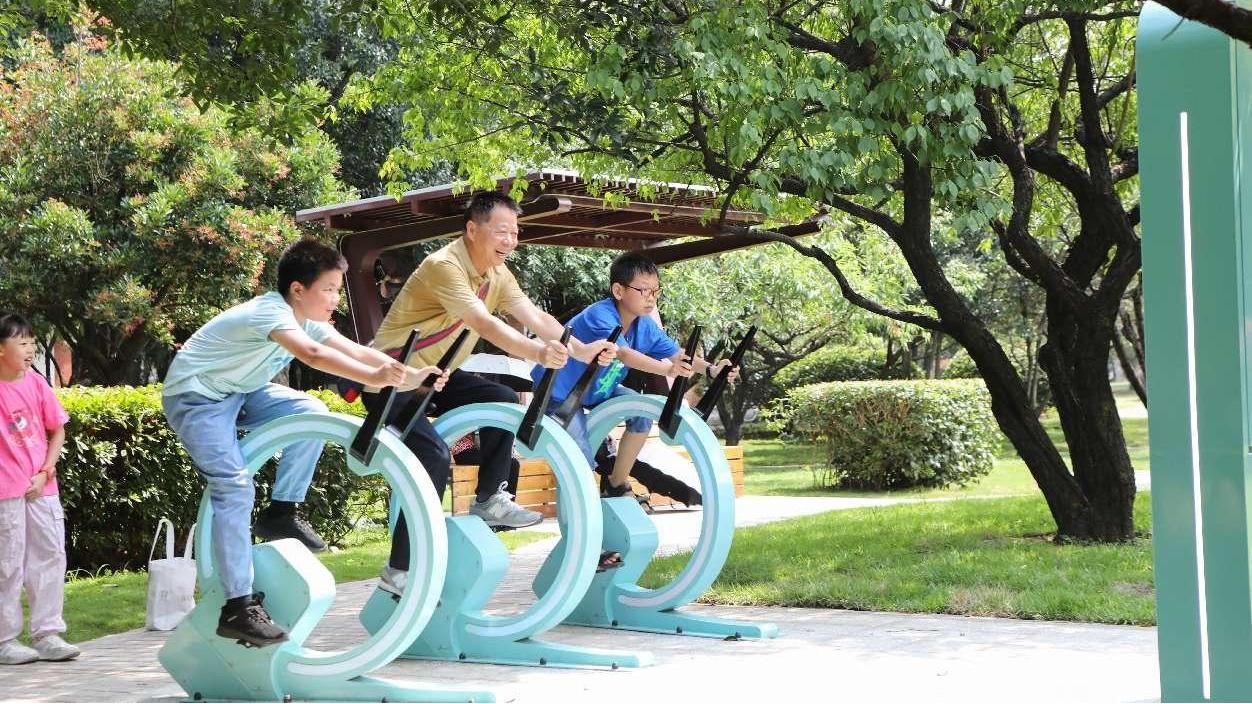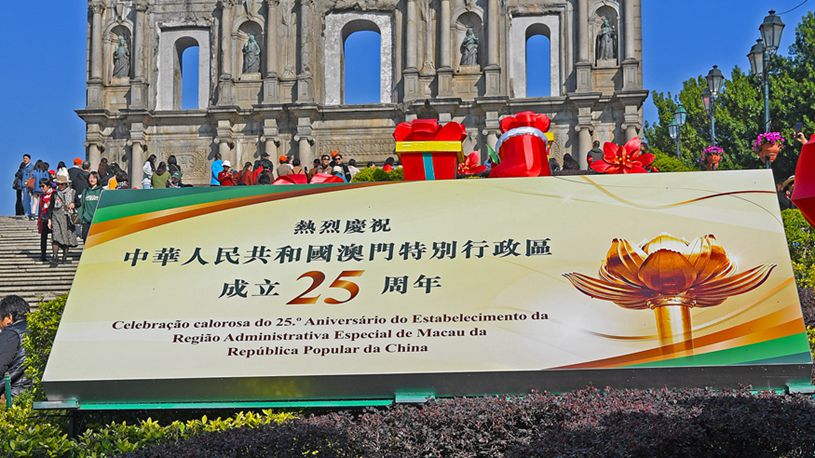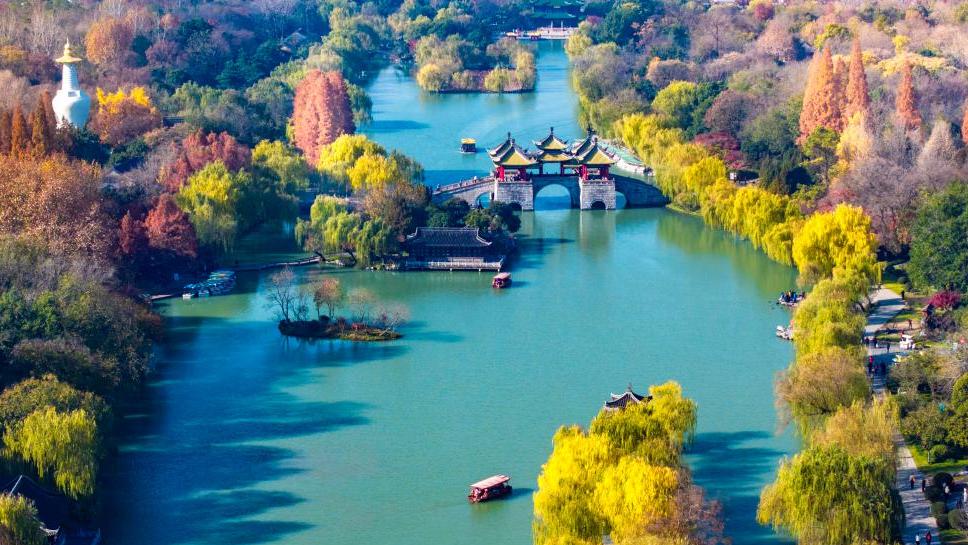Decoding a 25-year economic, social miracle
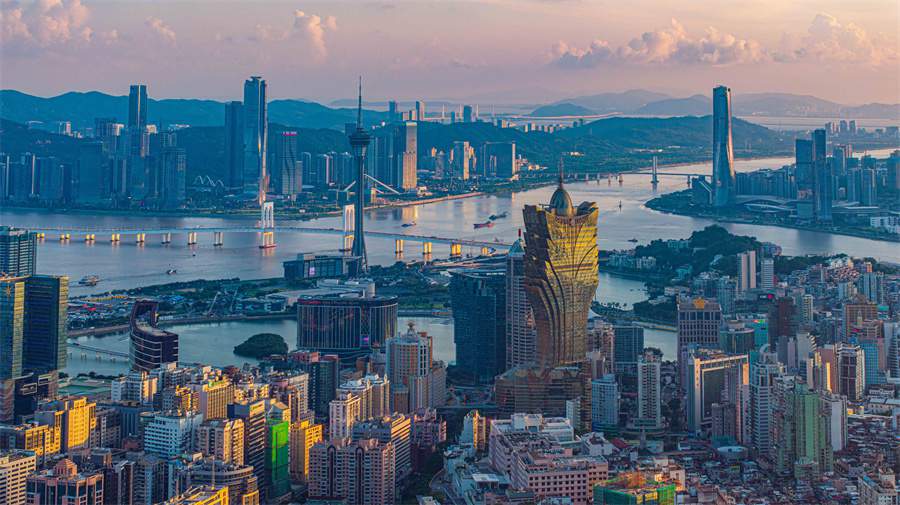
An aerial view of the Macao SAR shows the modern skyline in July. (Photo/Xinhua)
It has only taken Macao 25 years to place its name alongside the world's most successful cities.
The Macao Special Administrative Region, spanning a land area of 33.3 square kilometers, slightly smaller than Beijing Capital International Airport, proudly sits near the top global rankings for per capita gross domestic product, life expectancy of its residents, and the extent of its social welfare system.
These are among many of the city's achievements after its return to the motherland on Dec 20, 1999. Since then, Macao has developed into a world-class tourism destination with boutique hotels, attractive monuments, and a wide variety of cuisine appealing to almost every taste.
Through its history and heritage, the city is where East meets West, which has laid the foundation for Macao's role as a platform for exchanges between Chinese and Western cultures.
In a quarter of a century, Macao has transformed from a humble port into a cultural and leisure hub.
This evolution stands as a testament to the industrious spirit of Macao's residents, and is a compelling endorsement of "one country, two systems" — which incorporates Macao into the nation's development blueprint and guarantees a high degree of autonomy inside its territory.
Closer, stronger
Decoding the key to Macao's success starts with its close ties with the Chinese mainland. Every day, about 320,000 passengers enter or depart the city through the Border Gate — a land crossing connecting Macao to its neighboring city, Zhuhai, in Guangdong province.
In the early days of Macao's return, the checkpoint was far less busy. In 2003, the central government introduced the Individual Visit Scheme, which allowed residents of specified mainland cities to visit Macao without joining tour groups.
The policy, paired with the SAR's decision to open up its gambling industry a year earlier, reshaped the city's economic landscape.
Between 2003 and 2019, Macao's annual tourist arrivals soared from 11.9 million to 39.4 million. The portion of mainland visitors of the total number of tourists rose from 48.3 percent to 70.9 percent.
A steady influx of tourists helped forge a lucrative tourism industry, bringing wealth to restaurants, retail shops, pharmacies, hotels, and casinos.
Sensing a golden business opportunity, Chan Kam-tat, then aged 27, and his wife, opened a pharmacy in 2011. Today, Healthy Life has grown into a chain of six retail outlets and two distribution centers.
"The early days aligned with a surge of mainland tourists, so our business thrived," said Chan. He also credited the implementation of the two-child policy in January 2016 to the rise in sales of milk formula at his pharmacies. "The course of our business growth is closely linked with the motherland," Chan said.
In addition to the impetus tourism provided, in October 2003, the signing of the Mainland and Macao Closer Economic Partnership Arrangement (CEPA) granted Macao merchants preferential access to the vast mainland market, and also streamlined cross-boundary investment.
Since then, 10 supplements and multiple agreements have been ratified to enhance the CEPA, further deepening cooperation on trade in goods and services, and investment. As of September 2023, the arrangement had saved more than 90 million patacas ($11.3 million) in customs duties for Macao enterprises.
The arrangement facilitates market access, investment, and cultural exchanges between Macao and the mainland, and bolsters the city's appeal as an international business hub, said Francisco Leandro, associate professor of the faculty of social science at the University of Macau. The strategy also underscores Macao's importance to the country's broader economic initiatives, added Leandro.

Women in traditional Chinese costumes take selfies at Mount Fortress in Macao. (Photo/Xinhua)
Transformation
Just a brief 10-minute drive from the Border Gate is a colorful downtown area where the lines between Mediterranean charm and the region's Lingnan culture blur.
Centered around the 620-meter Avenida de Almeida Ribeiro, or "new avenue", Chinese markets and temples, as well as Southern European-style churches and residential buildings, dot the streets and hills. This area has served as the commercial heart of Macao for centuries.
Adorned with black-and-white calcada Portuguese-style pavements, and low-rise residential and religious buildings of Latin and Chinese designs, Macao's downtown is on most tourists' bucket lists.
During the day, visitors can sample the treats of food stalls serving local favorites such as a fried pork chop bun and beef jerky.
The thriving cultural and commercial strip, along with 22 iconic buildings, was inscribed as a UNESCO World Heritage site in 2005 and is known as the "Historic Centre of Macao".
Wu Zhiliang, president of the board of directors of the Macao Foundation, said the inscription was an affirmation by the international community of the city's contributions to dialogues between Eastern and Western cultures.
Wu's foundation — a semi-official body aimed at promoting various sectors of the city — has teamed up with the Macao SAR government to carry out educational and research projects on the historic center.
At the southern tip of the downtown district stands A-Ma Temple, a sacred site dedicated to the sea goddess Mazu. According to local lore, the temple is believed to be the etymological root of the city's name — Macao.
In 2023, a light rail station was opened near the temple, offering transit services that connect the Macao Peninsula to Taipa Island. Taking a 13-minute train journey from the station adjacent to A-Ma Temple, passengers can see opulent hotels and replicas of the Eiffel Tower and Big Ben. This is the new heart of Macao's leisure industry — Cotai.
Twenty-five years ago, the 6.1-square-kilometer stretch of reclaimed land was empty and awaiting planning approval.
With benefits resulting from the individual visit program and relaxed casino operation rules, Cotai has developed into a cluster of international hotels, shopping malls, casinos, performance venues, and sports facilities, providing tourists with exciting new experiences.
Cotai is home to another pillar of Macao's economy, the gaming industry. Before the COVID-19 pandemic, gambling revenue accounted for more than 60 percent of Macao's GDP at its peak, and casino operators paid more than 100 billion patacas in taxes every year.
The flourishing tourism and gaming industries have brought unimaginable wealth to Macao and its 700,000 residents.
This wealth has allowed the SAR government to build a comprehensive social welfare system envied by many other cities.
Macao provides free medical services to all residents aged 65 and above. The city inaugurated a 15-year free education program in the 2007-2008 academic year, covering from kindergarten to the end of secondary school, and subsidizes people who pursue further education.
The Wealth Partaking Scheme was initiated in 2008, to distribute cash to every resident holding Macao SAR permanent or non-permanent identity cards. In 2024, every permanent resident received 10,000 patacas, while non-permanent residents were given 6,000 patacas.
For over two decades, Macao has sustained an overall unemployment rate below 2 percent, and the median monthly income has swelled from 4,920 patacas in 1999 to 17,500 patacas in 2023.
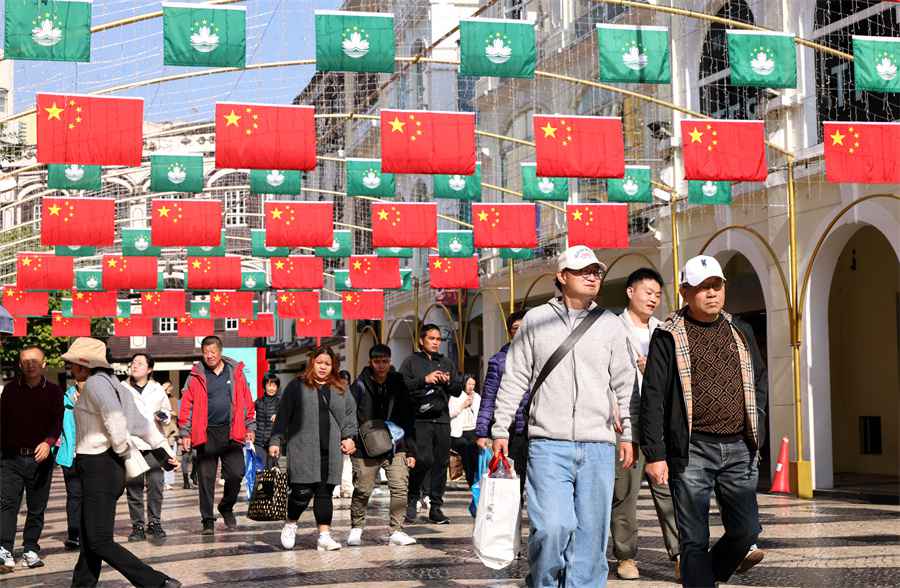
National flags of China and the Macao SAR's regional flags hang in a street to celebrate the 25th anniversary of Macao's return to the motherland. (Feng Yongbin/China Daily)
Evolving economy
However, the substantial wealth has not blinded Macao to the potential pitfalls of dependence on the gaming industry. In recent years, the city has adopted different approaches to diversify its economy in a healthy and sustainable way.
By 2023, the non-gaming sector contributed over 60 percent of the city's GDP, exceeding the proportions 20 years ago. Key drivers of this surge included the real estate and business services sector, as well as the banking and insurance industry.
Entrepreneurs are pioneering innovative business models to adapt to the evolving economic landscape. Chan, the pharmacy chain owner, has recognized mainland customers' growing use of online shopping. This has prompted him to learn e-commerce from his mainland peers and revamp the services he offers.
In 2023, the Macao SAR government released a blueprint for economic diversification, which charted road maps to boost four emerging sectors: big health, financial services, high technology as well as the convention, exhibition, trade, cultural, and sports industries.
Sam Hou-fai, the city's incoming chief executive, has made exploring forward-thinking reforms on the city's economic structure a cornerstone of his agenda. Other focuses include improving people's livelihoods, advancing integration with the nation's development, and strengthening collaboration with Portuguese-speaking countries.
Meanwhile, Macao has stepped up its economic and social ties with other cities in the Guangdong-Hong Kong-Macao Greater Bay Area, which was marked by the inauguration of the Hong Kong-Zhuhai-Macao Bridge in 2018.
Hengqin, a development zone under the jurisdiction of Zhuhai, located just 4 kilometers from the Cotai district, is a new key to Macao's transformation ambitions.
In 2021, the central government released a comprehensive plan to advance the development of the Guangdong-Macao In-Depth Cooperation Zone in Hengqin, deeming the 106-sq-km area — three times the land size of Macao — an indispensable base for the SAR's second transformation from a leisure hub to a moderately diversified economy.
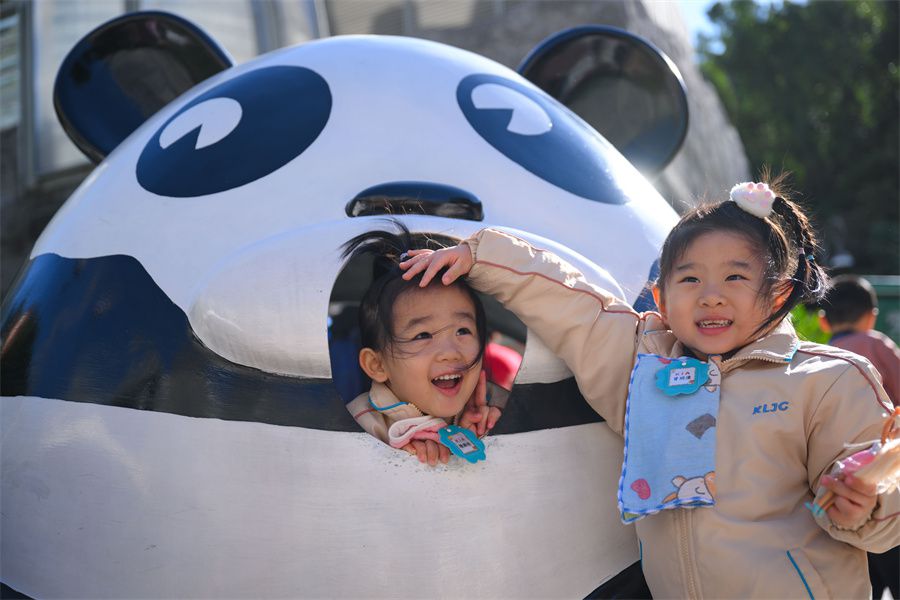
Children play in Seac Pai Van Park in Macao on Nov 29. (Photo/Xinhua)
Nurturing industries
The zone, jointly administered by Zhuhai and Macao authorities, offers land resources and favored policies to nurture key emerging industries pivotal to Macao's economic diversification strategy. These industries include high-end manufacturing, traditional Chinese medicine, and modern financial services.
As of June, the zone had over 17,000 companies active in emerging sectors, a 20.1 percent increase compared with the end of 2021. These enterprises contributed 47.1 percent to the zone's GDP.
The Macau New Neighborhood, a 190,000-square-meter community integrating residential buildings, schools, healthcare institutions, and elderly care centers, has been built in the cooperation zone to provide quality living spaces and services for Macao residents.
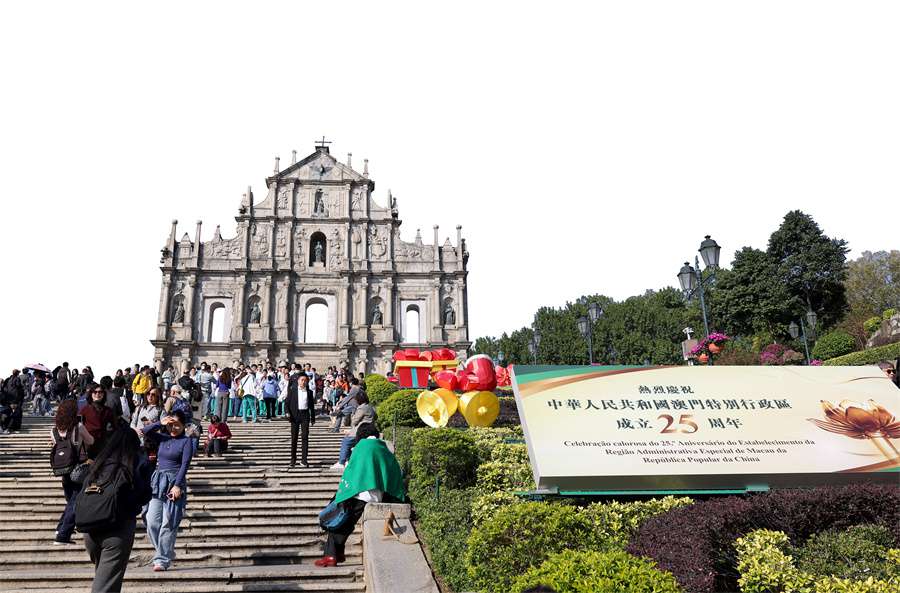
Tourists visit the Ruins of St. Paul's in Macao on Dec 17. (Feng Yongbin/China Daily)
By incorporating Macao-standard facilities and services, the project creates a seamless transition for Macao residents moving to Hengqin, said Duarte Alves, president of the general assembly of the Macanese Youth Association.
"The project, paired with Hengqin's unique tax incentives and simplified procedures for cross-border business, will attract both talent and investment, creating vibrant communities that support Macao's diversification efforts," Alves said.
The cooperation zone's development also benefits Macao's robust tourism sector. Since May 6, mainland travelers joining tour groups can make multiple entries between the cooperation zone and Macao over a seven-day period.
Morlin Teng Fong, president of the Macao Greater Bay Area Culture and Tourism Association, said nearly 1,000 Macao tour guides have secured working permits in Hengqin in recent years, enabling them to more effectively cater to mainland tourists.
Teng said Macao's tourism sector will ramp up training to deepen the entire industry's understanding of Hengqin's opportunities in the future.
With the advances of the past 25 years firmly in place, Macao is looking to the next quarter century with optimism. Ambitious plans are already in motion to refine its economic structure, and solidify its tourism and cultural attractions to help ensure the prosperity and stability of coming generations.
Photos
Related Stories
Copyright © 2024 People's Daily Online. All Rights Reserved.






